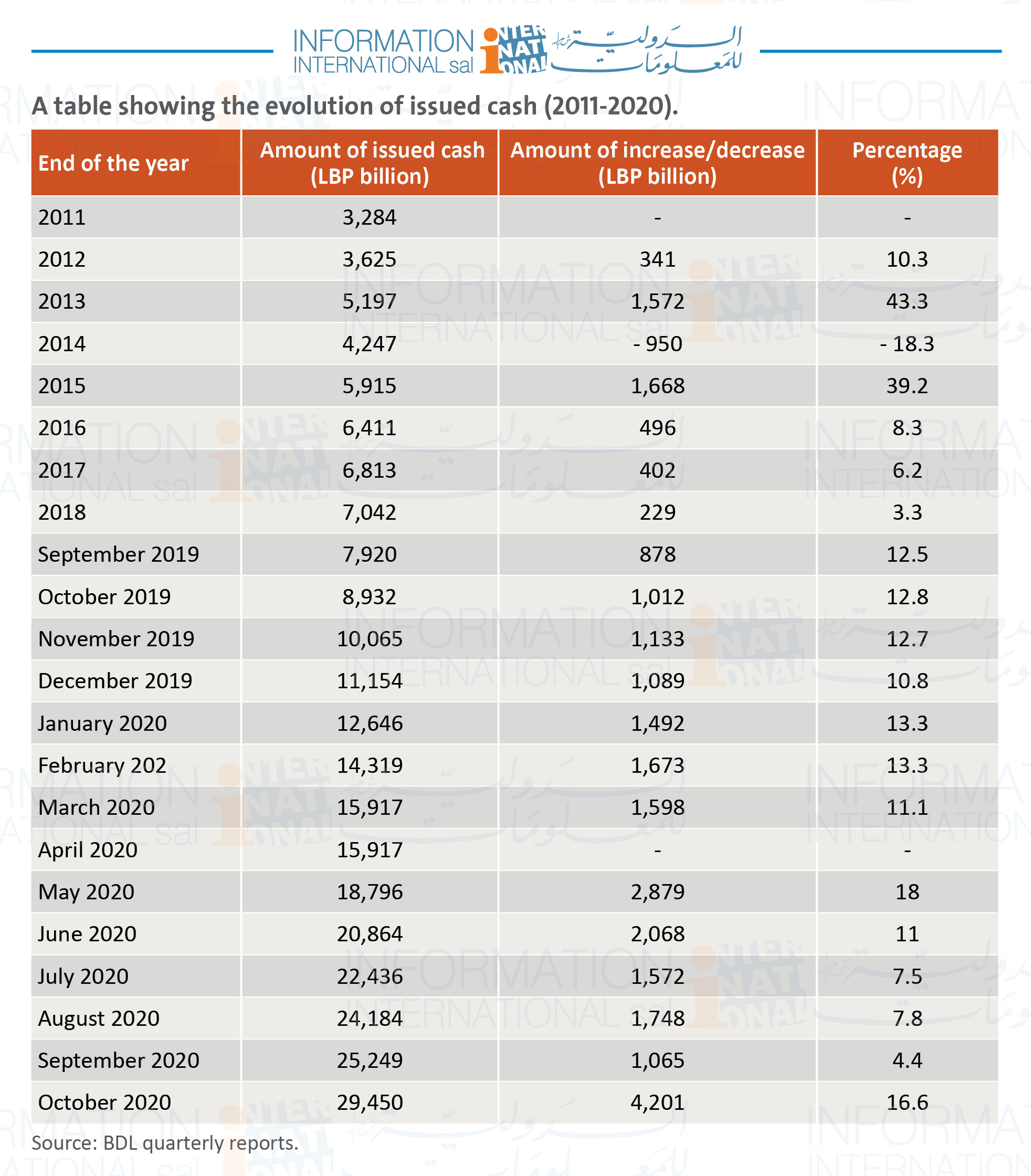Printing Lebanese pounds: Has BDL exceeded its legal ceiling?
Printing Lebanese pounds:
Has BDL exceeded its legal ceiling?
The Lebanese Monetary and Credit Code has exclusively entrusted the Banque du Liban (BDL) with the privilege of issuing cash (Article 47). Article 69 of the Monetary and Credit Code stipulates that “the bank shall keep in its assets funds of gold and foreign currencies that guarantee the coverage of cash, equivalent to at least 30% of the value of the cash it issued and the value of its demand deposits, provided that the value of gold and the aforementioned currencies is not less than 50% of the value of the issued cash”.
Between the end of 2011 and the end of 2020, the value of the issued cash in Lebanon rose from LBP 3,284 billion to LBP 29,450 billion, an increase of LBP 26,116 billion (796%). The largest increase took place between September 2019 and the end of 2020, reaching LBP 1,656 billion per month on average.
Currently, demand deposits amount to LBP 45,834 billion, which puts them and issued cash at a total of LBP 75,284 billion. But now that the BDL does not have a special reserve of foreign currencies except for the USD 16 billion in bank deposits, the only remaining coverage for cash is in gold reserves whose value is about LBP 24,000 billion, or 32% of demand deposits and issued cash. This means that the BDL has exceeded the specified ceiling (at least 30%) and hence cannot continue issuing cash.
In the event that bank deposits are considered reserves, to be added to gold, the percentage will rise to 64% of the deposits and the cash issued, allowing the bank to continue issuing cash.
That is the rationale for the Governor’s insistence on keeping 15% of BDL’s foreign currencies as reserve so to preserve its ability to issue more cash. This will increase inflation and drive prices up, yet is considered essential for the continuation of state financing. Otherwise, the state will plunge into deficit and bankruptcy and will turn unable to pay salaries, wages and other basic expenses.
A table showing the evolution of issued cash (2011-2020).

Source: BDL quarterly reports.








Leave A Comment